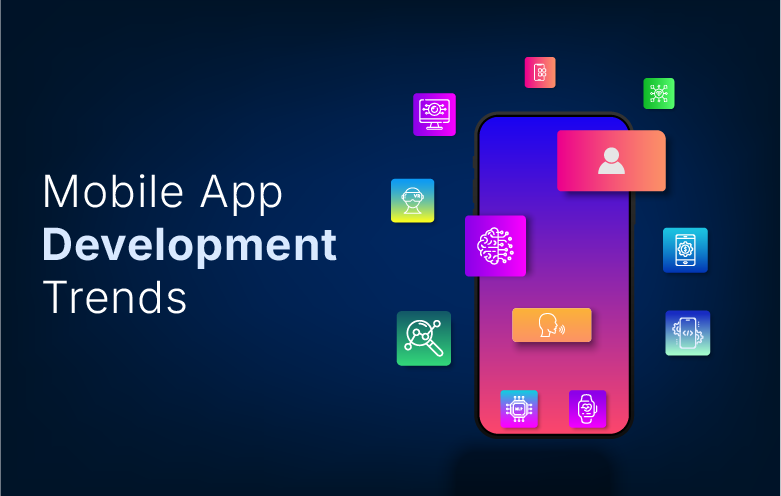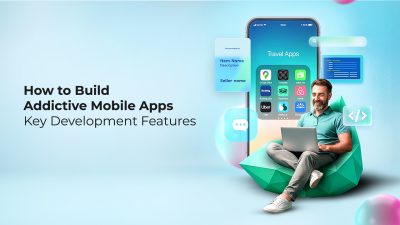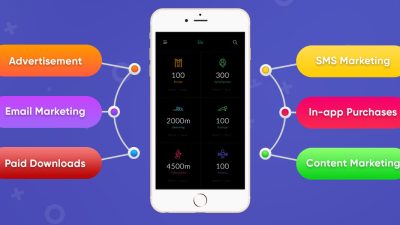Introduction
Mobile apps are no longer just digital tools—they’re business enablers, lifestyle companions, and innovation platforms. As user expectations evolve and technology advances, staying updated with the latest Mobile App Development Trends is essential for developers, designers, and businesses alike.
This blog explores the most impactful trends shaping mobile app development today, helping you stay ahead of the curve and build apps that are future-ready.
1. Rise of AI and Machine Learning in Mobile Apps
What’s Happening:
AI is transforming mobile apps from static tools into intelligent assistants. From personalized recommendations to predictive analytics, AI and ML are now core components of modern app experiences.
Examples:
- Chatbots and virtual assistants
- Image and voice recognition
- Smart search and filtering
- Fraud detection in fintech apps
Why It Matters:
AI improves user engagement, automates tasks, and enables smarter decision-making. Apps that learn and adapt offer a competitive edge.
2. Cross-Platform Development with Flutter and React Native
What’s Happening:
Businesses want faster development and broader reach. Cross-platform frameworks like Flutter and React Native allow developers to build apps for iOS and Android using a single codebase.
Benefits:
- Reduced development time and cost
- Consistent UI across platforms
- Strong community support
Why It Matters:
Cross-platform development is ideal for startups and businesses looking to validate ideas quickly without compromising quality.
3. 5G Technology and Its Impact on Mobile Apps
What’s Happening:
5G is rolling out globally, offering ultra-fast data speeds and low latency. This opens doors for richer mobile experiences.
Opportunities:
- Real-time multiplayer gaming
- AR/VR streaming
- Instant cloud sync
- Enhanced video conferencing
Why It Matters:
Apps can now deliver high-performance features that were previously limited by network constraints.
4. Augmented Reality (AR) and Virtual Reality (VR)
What’s Happening:
AR and VR are moving beyond gaming into retail, education, healthcare, and real estate.
Examples:
- Virtual try-ons in fashion apps
- AR navigation in travel apps
- VR training modules in education
- AR home visualization in interior design
Why It Matters:
Immersive experiences increase engagement and help users make better decisions.
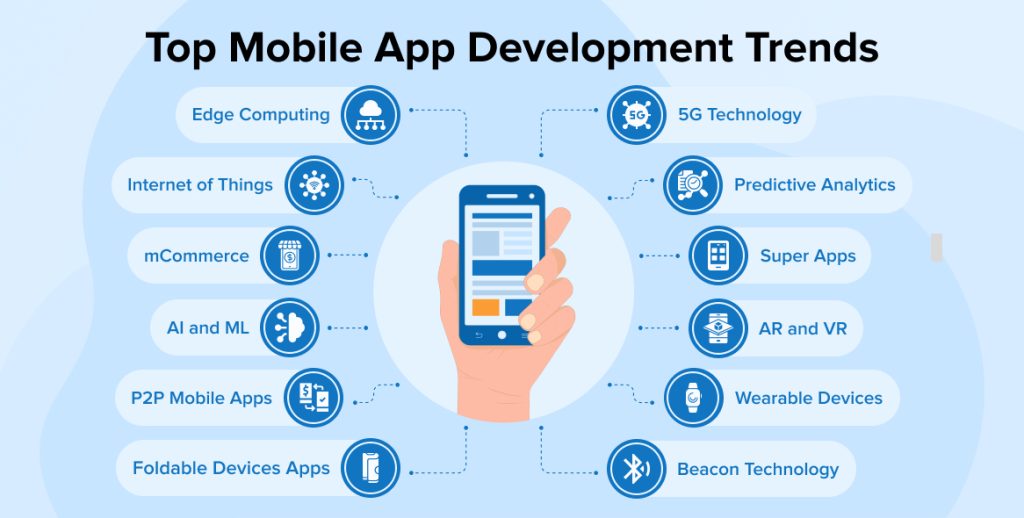
5. Voice Technology and Conversational Interfaces
What’s Happening:
Voice assistants like Siri, Alexa, and Google Assistant have normalized voice interactions. Apps are now integrating voice commands and conversational UIs.
Use Cases:
- Voice search in e-commerce
- Hands-free navigation
- Voice-controlled smart home apps
- Accessibility for visually impaired users
Why It Matters:
Voice interfaces offer convenience and inclusivity, especially in multitasking environments.
6. Mobile Commerce and Fintech Innovations
What’s Happening:
Mobile commerce is booming, and fintech apps are evolving rapidly with features like UPI, digital wallets, and investment tracking.
Trends:
- One-click payments
- Biometric authentication
- Crypto wallets
- BNPL (Buy Now, Pay Later) integrations
Why It Matters:
Secure, seamless financial transactions are now a baseline expectation for mobile users.
7. App Security and Privacy Enhancements
What’s Happening:
With increasing data breaches and privacy concerns, users demand secure apps. Developers are prioritizing security from day one.
Best Practices:
- End-to-end encryption
- Biometric login
- GDPR and HIPAA compliance
- Secure APIs and data storage
Why It Matters:
Trust is a key factor in app adoption and retention. Security is no longer optional—it’s a competitive advantage.
8. Cloud Integration and Backend-as-a-Service (BaaS)
What’s Happening:
Cloud-based apps offer scalability, reliability, and real-time data access. BaaS platforms like Firebase and AWS Amplify simplify backend management.
Benefits:
- Faster development cycles
- Real-time sync across devices
- Reduced infrastructure costs
Why It Matters:
Cloud integration enables apps to scale effortlessly and deliver consistent experiences across platforms.
9. Internet of Things (IoT) and Smart Device Integration
What’s Happening:
Mobile apps are increasingly controlling smart devices—from thermostats and lights to wearables and vehicles.
Examples:
- Fitness tracking with wearables
- Smart home control apps
- Connected car dashboards
- Industrial IoT monitoring
Why It Matters:
IoT integration expands app functionality and creates new business models.
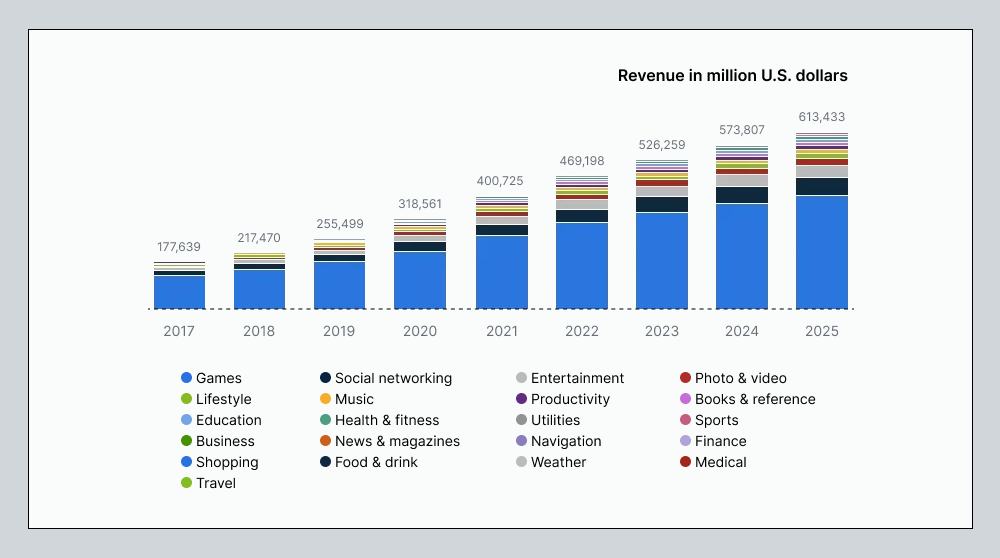
10. Super Apps and All-in-One Platforms
What’s Happening:
Inspired by apps like WeChat and Paytm, super apps combine multiple services—messaging, payments, shopping, and more—into one platform.
Features:
- Mini-apps within a main app
- Unified user experience
- Cross-service personalization
Why It Matters:
Super apps increase user retention and offer convenience, especially in emerging markets.
11. Progressive Web Apps (PWAs)
What’s Happening:
PWAs offer app-like experiences via browsers, without requiring downloads. They’re fast, lightweight, and ideal for low-bandwidth regions.
Benefits:
- Offline access
- Push notifications
- Faster load times
- Lower development cost
Why It Matters:
PWAs bridge the gap between web and mobile, expanding reach and accessibility.
12. App Store Optimization (ASO) and User Acquisition
What’s Happening:
With millions of apps in stores, visibility is key. ASO helps apps rank higher and attract organic downloads.
Strategies:
- Keyword-rich titles and descriptions
- Eye-catching icons and screenshots
- Positive reviews and ratings
- Localization for global reach
Why It Matters:
ASO is essential for discoverability and growth, especially for new apps.

13. Sustainability and Ethical Design
What’s Happening:
Users are becoming conscious of digital sustainability. Developers are optimizing apps for energy efficiency and ethical data use.
Practices:
- Low-energy design
- Minimal data collection
- Dark mode for battery saving
- Transparent privacy policies
Why It Matters:
Ethical design builds trust and aligns with modern user values.
14. Gamification and Micro-Engagement
What’s Happening:
Gamification boosts user engagement through rewards, challenges, and progress tracking.
Examples:
- Loyalty points in shopping apps
- Daily streaks in learning apps
- Badges and leaderboards in fitness apps
Why It Matters:
Micro-engagement keeps users coming back and increases retention.
15. Personalization and Adaptive UI
What’s Happening:
Apps are using data to personalize content, layouts, and interactions based on user behavior.
Techniques:
- AI-driven recommendations
- Dynamic UI elements
- Context-aware notifications
Why It Matters:
Personalization enhances user satisfaction and drives conversions.
Conclusion
Mobile app development is evolving rapidly, driven by technological innovation and changing user expectations. From AI and 5G to ethical design and super apps, these trends are shaping the future of mobile experiences.
Whether you’re a developer, designer, or business owner, staying informed about these trends helps you build apps that are not only functional but also future-proof, engaging, and impactful.


